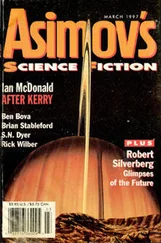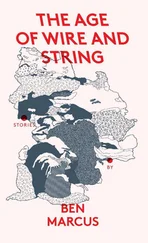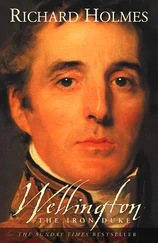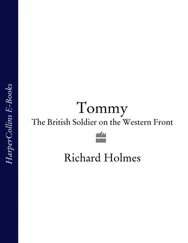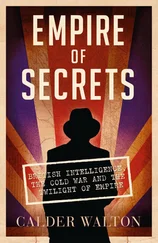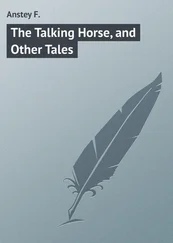Individual studies provide the equivalent of ducting and plumbing. Brian Robson has made the swords of the period his own, and Howard Blackmore and Christopher Roads have its small arms at their disposal. The Marquess of Anglesey has charted the fortunes of the British cavalry in his multi-volume history. Elizabeth Longford’s biography of Wellington remains unsurpassed, though Christopher Hibbert’s more recent personal history is an easier read. I cannot speak too highly of Mark Adkin’s study of the Charge of the Light Brigade, and I am grateful that need to amass suitable building materials drew me to Frank McLynn’s work on crime and punishment in Georgian England, for it was in a part of the yard not often visited by military historians.
Onto this robust structure I have bolted dozens of personal accounts, letting the men who wore the red coat speak for themselves whenever I can. I had encountered some, like John Kincaid and William Grattan, when an undergraduate, and rediscovering them many years on was like meeting a well-preserved old flame in a King’s Parade coffee-shop, and discovering that age has not wearied nor the years condemned. Others were unfamiliar. It is thanks to the Army Records Society that Thomas Browne and John Peebles feature so prominently in these pages, and to Spellmount Publishers that William Tomkinson’s Peninsula journal, to name but one of their invaluable books, has escaped from the antiquarian booksellers to which rarity had previously confined it. I have had some pieces of unaccountable good luck: discovering the manuscript Order Book of General Sir William Howe, commander in chief in North America, in the library at the Joint Services Command and Staff College at Watchfield was perhaps the most striking.
So many of the memoirs of the period were written by non-commissioned personnel that I am confident in my denial of the charge that this sort of book is simply epaulette history, giving the officer’s view. Robert Waterfield, Thomas Morris and John Cooper of the line infantry, Benjamin Harris and Edward Costello of the Rifles, and John Pearman of the light dragoons are amongst those who remind us what it was like to be ‘an atom of an army’, as one of their most articulate comrades, Thomas Pococke, actor turned reluctant private soldier of the 71st Regiment, was to put it. And of course there is the incredible John Shipp, twice commissioned from the ranks – once for spectacular bravery in the field. I have tried to provide references for all substantive quotations, and list memoirs and collected letters by the name of their writer rather than their editor: the bibliography, really a working list of books actually used, makes this clear.
My approach is thematic rather than chronological. By and large I start with big issues and move on to smaller ones, first examining the army’s size and composition, the character of the society that produced it, and the part it played in the nation’s defence policy. Thereafter I review the army’s administration and overall structure, its officers and men, and tactics of the combat arms and the effects produced by their weapons. The last two chapters consider the soldier’s daily life in peace and war respectively. Such an approach shuns easy categorisation. It is impossible, for example, to separate pay in peacetime from prize money in wartime. Any attempt to place the contribution made by women in a separate chapter might have the benefit of political correctness but would miss the point that they formed an inseparable part of the army, whether getting the Duke of York into trouble with Parliament, consoling the amorous Ensign Lord Alvanley, rising to become inspector general of the medical department while disguised as a man, or simply supporting their own men in rain and shine, and under shot and shell, from Aldershot to Amballa and the Curragh to the Crimea. So you will find them, the Colonel’s Lady and Judy O’Grady alike, where you least expect them.
I have not written for what are unkindly termed ‘military buffs’: indeed, those who go in for the martial equivalent of train spotting will complain that I have paid scandalously little attention to the raising, disbandment, re-raising and renumbering of infantry regiments in the eighteenth century, and so I have. My comments on uniform are very broad: this is not the place to discover which regiments were fortunate enough to wear bastion-ended lace on their tunics. And as to the minutiae of ‘off-reckonings’ and ‘net-reckonings’ in regimental accounting, well, if they perplexed the great Sir John Fortescue, they can scarcely do less for me.
The general reader might appreciate some simple definitions, although the British army is not a creature that thrives on simplicity. Officers, ‘commission-officers’ to the seventeenth century and commissioned officers to later generations, held rank and authority from a commission signed by the monarch. The field marshal, a comparatively rare bird, was their most senior. There were three grades of general officers, general, lieutenant general and major general. Major generals are, confusingly, junior to lieutenant generals, partly because their rank was once ‘sergeant major general’ and partly because the lieutenant general (as implied by the word lieutenant wherever it appears) stood in for his master when required. Brigadier generals and brigadiers – terminology changed over the period – held a temporary rank from which they might be advanced or not, as the case might be, and were analogous to commodores in the Royal Navy, who were captains temporarily holding a senior appointment.
There were two sorts of colonels. What we may call colonels proper held a substantive rank from which seniority would eventually, provided they lived long enough, elevate them to join the generals. Colonels of regiments, in contrast, were usually not colonels at all but general officers acting as regimental proprietors, dispensing patronage, making a profit, and warning the young, over a glass of port, that standards were slipping. Field officers comprised lieutenant colonels and majors, while company officers were captains, lieutenants and cornets (for the cavalry), ensigns (for most of the infantry), and second lieutenants (for the artillery, engineers and a few infantry regiments). Quartermasters were regimental officers responsible for supplies and quartering, and adjutants (the term was an appointment, not a rank, and its holder would be termed correctly, ‘lieutenant and adjutant’ or ‘captain and adjutant’) assisted the regiment’s commanding officer in drill, administration – and in the case of Colonel John Wilkes MP of the Middlesex Militia, duelling.
Non-commissioned officers began with sergeant majors, grave and reverend gentlemen of whom there was one per infantry battalion, although the cavalry had one regimental sergeant major and a troop sergeant major for each of its troops. Staff sergeants were senior sergeants on the staff of regimental headquarters rather than one of its subordinate companies, and colour sergeants, a rank introduced into the infantry in 1813, ranked senior to other sergeants and had a very imposing arm badge to prove it. Sergeants were a cut above junior non-commissioned officers, corporals in most arms and bombardiers in the Royal Artillery. The appointment of a chosen man, a private soldier selected by his commanding officer to deputise for a corporal, eventually became that of lance corporal. And as to captain-lieutenants, sub-brigadiers and file-majors: well, I will explain about these worthies when they feature in my story.
The regiment, usually commanded in the field by a lieutenant colonel, was the basic building block in the infantry and the cavalry. As time went on infantry regiments tended to have more than one battalion, and in the British army these battalions, lieutenant colonels’ commands, usually fought independently from the other battalions of their regiment. In these pages I follow the convention of showing 1 stBattalion 33 rdRegiment as 1/33 rd, while 1 stBattalion 1 stFoot Guards is 1/1 stFoot Guards. I use 33 rdFoot and 33 rdRegiment, as contemporaries did, almost interchangeably: do not be concerned, for they are the same creature. The company, a captain’s command, was the main sub-unit of the infantry, and the troop was its cavalry equivalent. Cavalry troops were often paired to make squadrons. Infantry battalions and cavalry regiments were formed into brigades, and brigades into divisions, though the precise nature of this combination varied from time to time.
Читать дальше

